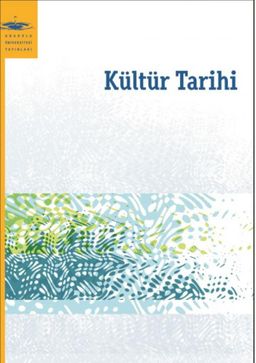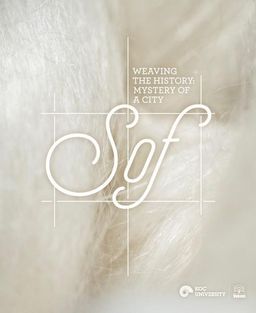Sof Hakkında
Sof konusu, istatistikler, fiyatları ve daha fazlası burada.Hakkında
Weaving the History: Mystery of a City, Sof exhibition explores the history of the Angora goat and its precious mohair and the premium, luxurious fabric called sof produced from the Angora goat’s brilliant unadulterated mohair yarn during the Ottoman Era. Sof production and mohair weaving once shaped the economy and social life of Ankara, especially in the 16th century ceased to an end in the 19th century and sof has become a forgotten value. This exhibition catalog documents the making of a research- based exhibition. Furthermore, it aims to become a reference book for researchers by compiling objects demonstrating the importance of the Angora goat and the usages of mohair together with presenting articles authored by researchers from various disciplines.
Articles compiled in the first part of this book focus on subjects such as the roots of weaving in Anatolia, biological characteristics of the Angora goat, the Angora goat economy in the 19th century and the changes in the Angora goat density in Ankara, the adventure of the Angora goat in France and South Africa, the history of the Angora goat and mohair production in Ankara, mohair supply chain in the republican period, the use of the Angora goat as a symbol in the designs of banknotes, stamps and logos, the story of the 18th century painting the “View of Ankara” from Rijksmuseum collection which is the oldest painting known to depict Ankara and mohair weaving.
The exhibition catalog features objects and artefacts from Koç University Vehbi Koç Ankara Studies Research Center VEKAM’s library and archive, museum and personal collections. Among these, 16th and 17th century examples from mohair from the Topkapı Palace collection, 19th and 20th century clothing fashioned from mohair and sof from Sadberk Hanım Museum collection and sof fabric samples from Ethnographical Museum of Ankara collection and View of Ankara from Rijkmuseum portrays the importance of mohair and exemplifies its usages. A compilation of engravings, rare books, photographs about the Angora goat and mohair preparation tools and natural dyes used for dyeing mohair, in addition to contemporary woven and knitted mohair examples are also included in this catalog for readers to trace both the history and the processes included in mohair related production in Ankara and Anatolia.
Yazar: Filiz Yenişehirlioğlu
Çevirmen: Turgut Berkes
Tahmini Okuma Süresi: 8 sa. 59 dk.Sayfa Sayısı: 317Basım Tarihi: 5 Ekim 2018Yayınevi: Koç Üniversitesi YayınlarıISBN: 9786059388139Ülke: TürkiyeDil: EnglishFormat: Karton kapak
Yazar Hakkında
Filiz YenişehirlioğluYazar · 2 kitap
1968 yılında Arnavutköy Amerikan Kız Koleji’ni (Robert Kolej) bitiren Yenişehirlioğlu, arkeoloji ve sanat tarihi öğrenimi gördüğü Paris Sorbonne Üniversitesi’nden 1971 yılında mezun oldu. Aynı üniversiteden İslam arkeolojisi ve sanat tarihi dalında yüksek lisans (1973) ve doktora (1981) derecelerini aldı. 1975-86 arasında Hacettepe Üniversitesi’nde (HÜ) öğretim üyeliği yaptı. 1986 yılında ABD’ye giderek Harvard Üniversitesi’nde Ağa Han İslam ve Mimarlık Programı’nda konuk öğretim üyesi olarak çalıştı. 1990 yılında HÜ’de profesör olan Yenişehirlioğlu, akademik yaşamını Osmanlı sanatı ve mimarisi dersleri vererek sürdürdü. 1995-98 arasında İngiltere’de Cambridge Üniversitesi Şarkiyat İncelemeleri Fakültesi’nde konuk öğretim üyesi olarak bulundu. Türkiye’ye döndükten sonra 2003 yılına kadar HÜ Arkeoloji ve Sanat Tarihi Bölümü’nde ders verdi. 2003 yılında geçtiği Başkent Üniversitesi’nde Güzel Sanatlar, Tasarım ve Mimarlık Fakültesi’ni kurarak dekanı oldu. Prof. Yenişehirlioğlu 2014 yılında Koç Üniversitesi Arkeoloji ve Sanat Tarihi Bölümü’nde öğretim üyesi olarak, üniversiteye bağlı VEKAM’ın direktörlüğünü üstlendi.
Akademik görevlerinin yanı sıra UNESCO Kültür Mirası Ulusal Komitesi üyeliği (1987-92 ve 2002-2006) ve Anadolu Sanat Tarihçileri Derneği başkanlığı da (2001-03) yapan Prof. Yenişehirlioğlu’na 1991 yılında Fransa Kültür Bakanlığı tarafından Sanat ve Edebiyat Şövalyesi nişanı, 1992 yılında ise Adelaide Ristori Ödülü (İtalya) verilmiştir.
Prof. Yenişehirlioğlu’nun yayınları arasında Les grandes lignes de l'évolution du programme décoratif en céramique des édifices ottomans au cours du XVIème siècle (1985), Türkiye Dışında Osmanlı Mimari Yapıtları (1989) ve başka yazarlarla birlikte hazırladığı Ali Saim Ülgen Çizimleri ile Mimar Sinan ve Yapıları (1989) ve Mersin Evleri (1995) başlıklı kitaplar bulunmaktadır. Editörlüğünü yaptığı Akdeniz Uygarlıkları Sanatı başlıklı çalışma 2012 yılında yayımlanmıştır.


